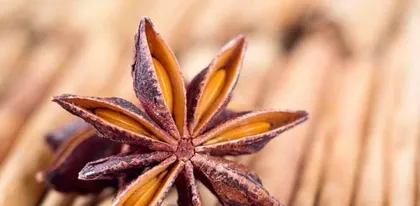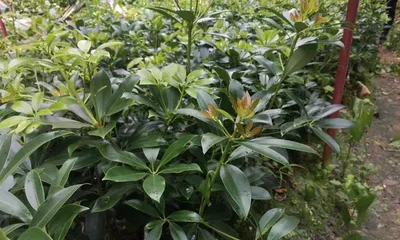Star anise is a traditional Chinese seasoning prized for its aromatic fragrance and medicinal value. However, to enjoy authentic star anise, one needs to understand some basic knowledge such as the harvesting time and season. Let's explore these details together.

I. Getting to Know the Star Anise Tree
Star anise is an evergreen tree belonging to the laurel family, growing up to 10 meters tall with gray-brown or light yellow bark. Its branches are slender, blooming in winter and spring, and fruiting in summer and autumn. The leaves are elliptical or obovate, thick and glossy, with a prominent midrib, reaching up to 15 cm in length.
II. Star Anise Harvesting Time
The harvesting time for star anise is usually during summer and autumn, when the fruits gradually turn from green to yellow. Generally, the best time to harvest is when the fruits have just turned yellow, as this is when their aroma is most intense.

III. Fresh and Dried Star Anise
After harvesting star anise, you can first peel off the outer skin and then dry it in the sun or place it in a cool, ventilated area. The dried star anise is called star anise powder, which is an essential material for making star anise powder and spices. However, dried star anise doesn't have as strong an aroma as fresh star anise.
IV. Star Anise Care Techniques
Caring for star anise trees is similar to other fruit trees, requiring proper watering, fertilization, and pruning. Since the branches of star anise are relatively soft, they need to be supported during the growth period to prevent breakage.
V. About Star Anise Food Culture
In traditional Chinese cuisine, star anise is one of the indispensable seasonings. It can be used for grilling, stewing, pickling, and even for making desserts like star anise twists and small cookies.

VI. How to Choose Quality Star Anise
When selecting quality star anise, pay attention to the following points: the color should be vibrant, the shape should be intact, and the aroma should be rich. If there are insect holes or damage, it is不合格 (unqualified).
VII. How to Store Star Anise
When storing star anise, keep it in a cool, dry, and well-ventilated environment. If stored for too long, the aroma will gradually weaken, so it's best to use it within six months.
VIII. Medicinal Value of Star Anise
Star anise not only serves as a seasoning but also has certain medicinal value, such as treating stomach cold, stomach pain, and diarrhea.
IX. Common Counterfeit Star Anise
Due to the high price of star anise, there are many counterfeit products on the market, such as using other laurel plants as substitutes or chemically synthesized spices.
X. Taboos When Harvesting Star Anise
When harvesting star anise, note the following: do not pick unripe fruits, do not use any chemical pesticides, and do not damage the star anise tree, otherwise it will affect next year's yield.
XI. Distribution Areas of Star Anise Trees
Star anise is mainly distributed in southern China, such as Jiangxi, Fujian, Guangdong provinces. Due to the climate, star anise from the south has better quality.
XII. How to Distinguish Between Star Anise and Fennel
Since star anise and fennel look similar and are easily confused, they need to be distinguished. Star anise has a stronger taste and larger leaves, while fennel is the opposite.
XIII. How to Handle Star Anise Byproducts
During the processing of star anise, some byproducts are produced, such as star anise shells and branches. These byproducts can be used to make dyes and wood.
XIV. Application of Star Anise in Foreign Countries
Star anise not only has a long history in China but is also widely used in other countries. For example, Vietnam, Indonesia and other countries also use star anise as a seasoning.
XV.
Through this introduction, we have gained a more detailed understanding of star anise harvesting time and season, as well as related knowledge and application scenarios. We hope this content will be helpful to everyone.
<|end_of_box|>